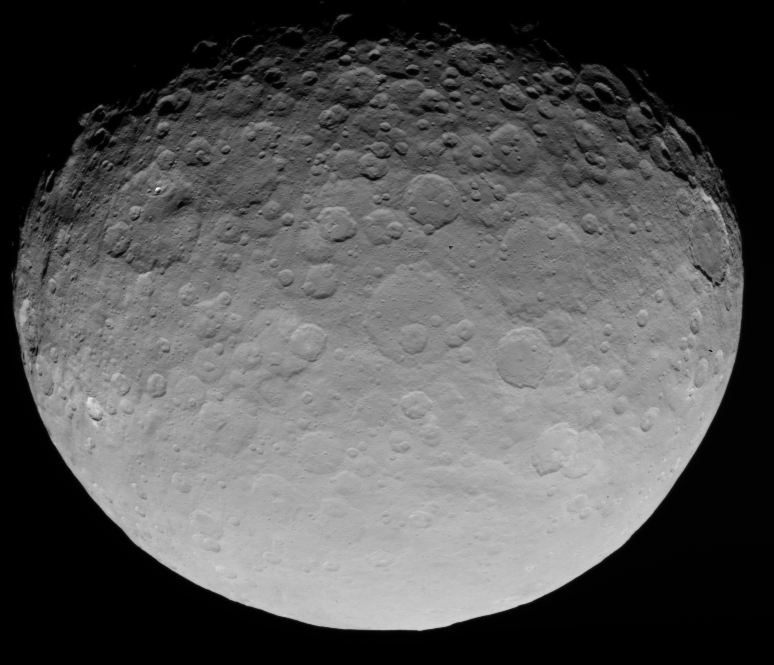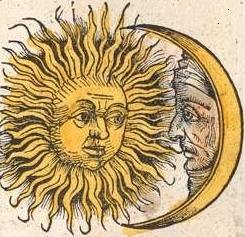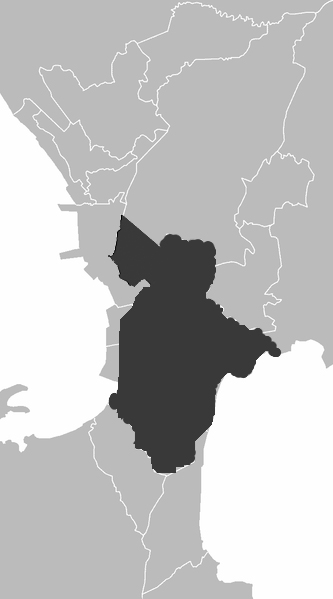|
Survivor Philippines (season 1)
The first season of ''Survivor Philippines'' premiered on September 15, 2008, and ended its run on December 14 of the same year, when John Carlo "JC" Tiuseco, defeating Robert Vincent "Rob" Sy in a vote of 7–2. Auditions for this season were held in six Philippine cities in May 2008. From these auditions, 18 contestants were selected to participate on the show in June 2008. The show was filmed in Ko Tarutao, the same island where '' Survivor: Thailand'' took place, from July to August, 2008. Format changes Although the main format is the same, this season introduced several notable differences from the American version of ''Survivor'': *Airing format: This season aired five times a week, compared to the once-weekly airing schedule of the American version. The American version largely produces one episode for every three days, culminating in an elimination; this season had 65 episodes, with between four and six episodes for every three days. *Black and white pearls: Small trin ... [...More Info...] [...Related Items...] OR: [Wikipedia] [Google] [Baidu] |
Paolo Bediones
Paolo Antonio Barba Bediones (born March 17, 1974) is a Filipino television host, newscaster, radio commentator and actor. Bediones started his career as a commercial model, and later transitioned to television show hosting. He is best known for hosting GMA Network's ''Extra Challenge'' and ''Survivor Philippines''. He is now a TV host and the newest newscaster on TV5. On December 3, 2009, Bediones announced in a press conference that he had signed a three-year exclusive contract with TV5 (formerly ABC-5), owned by TV5 Network Inc. (formerly Associated Broadcasting Company). Personal life Paolo, only male child among four offspring, was born to Rodolfo Pineda Bediones (from Roxas City, Capiz) and Maria Teresa Barba who separated when Paolo was still young. His mother Maria is the daughter of Fortuna Marcos-Barba (Paolo's maternal grandmother) who's the sister of the late former President Ferdinand Marcos (Paolo's maternal granduncle). His late great grandfather was Maximo ... [...More Info...] [...Related Items...] OR: [Wikipedia] [Google] [Baidu] |
Tacloban City, Leyte
Tacloban ( ; ), officially the City of Tacloban ( war, Syudad han Tacloban; fil, Lungsod ng Tacloban), is a first class highly urbanized city in the Eastern Visayas region of the Philippines. The city is autonomous from the province of Leyte, although it serves as its provincial capital. According to the 2020 census, Tacloban has a population of 251,881, making it the most populous city in the Eastern Visayas. The city is located southeast from Manila. Tacloban City was briefly the capital of the Philippines under the Commonwealth Government, from October 20, 1944, to February 27, 1945. In an extensive survey conducted by the Asian Institute of Management Policy Center and released in July 2010, Tacloban City ranks as the fifth most competitive city in the Philippines, and second in the emerging cities category. On November 8, 2013, the city was largely destroyed by Typhoon Haiyan, having previously suffered similar destruction and loss of life in 1897 and 1912. On January 17 ... [...More Info...] [...Related Items...] OR: [Wikipedia] [Google] [Baidu] |
Days 10–12 (Episodes 17–20)
A day is the time period of a full rotation of the Earth with respect to the Sun. On average, this is 24 hours, 1440 minutes, or 86,400 seconds. In everyday life, the word "day" often refers to a solar day, which is the length between two solar noons or times the Sun reaches the highest point. The word "day" may also refer to ''daytime'', a time period when the location receives direct and indirect sunlight. On Earth, as a location passes through its day, it experiences morning, noon, afternoon, evening, and night. The effect of a day is vital to many life processes, which is called the circadian rhythm. A collection of sequential days is organized into calendars as dates, almost always into weeks, months and years. Most calendars' arrangement of dates use either or both the Sun with its four seasons (solar calendar) or the Moon's phasing ( lunar calendar). The start of a day is commonly accepted as roughly the time of the middle of the night or midnight, wri ... [...More Info...] [...Related Items...] OR: [Wikipedia] [Google] [Baidu] |
Days 7–9 (Episodes 11–16)
A day is the time period of a full rotation of the Earth with respect to the Sun. On average, this is 24 hours, 1440 minutes, or 86,400 seconds. In everyday life, the word "day" often refers to a solar day, which is the length between two solar noons or times the Sun reaches the highest point. The word "day" may also refer to ''daytime'', a time period when the location receives direct and indirect sunlight. On Earth, as a location passes through its day, it experiences morning, noon, afternoon, evening, and night. The effect of a day is vital to many life processes, which is called the circadian rhythm. A collection of sequential days is organized into calendars as dates, almost always into weeks, months and years. Most calendars' arrangement of dates use either or both the Sun with its four seasons (solar calendar) or the Moon's phasing ( lunar calendar). The start of a day is commonly accepted as roughly the time of the middle of the night or midnight, wri ... [...More Info...] [...Related Items...] OR: [Wikipedia] [Google] [Baidu] |
Days 4–6 (Episodes 6–10)
A day is the time period of a full rotation of the Earth with respect to the Sun. On average, this is 24 hours, 1440 minutes, or 86,400 seconds. In everyday life, the word "day" often refers to a solar day, which is the length between two solar noons or times the Sun reaches the highest point. The word "day" may also refer to ''daytime'', a time period when the location receives direct and indirect sunlight. On Earth, as a location passes through its day, it experiences morning, noon, afternoon, evening, and night. The effect of a day is vital to many life processes, which is called the circadian rhythm. A collection of sequential days is organized into calendars as dates, almost always into weeks, months and years. Most calendars' arrangement of dates use either or both the Sun with its four seasons (solar calendar) or the Moon's phasing ( lunar calendar). The start of a day is commonly accepted as roughly the time of the middle of the night or midnight, wri ... [...More Info...] [...Related Items...] OR: [Wikipedia] [Google] [Baidu] |
Days 1–3 (Episodes 1–5)
A day is the time period of a full rotation of the Earth with respect to the Sun. On average, this is 24 hours, 1440 minutes, or 86,400 seconds. In everyday life, the word "day" often refers to a solar day, which is the length between two solar noons or times the Sun reaches the highest point. The word "day" may also refer to ''daytime'', a time period when the location receives direct and indirect sunlight. On Earth, as a location passes through its day, it experiences morning, noon, afternoon, evening, and night. The effect of a day is vital to many life processes, which is called the circadian rhythm. A collection of sequential days is organized into calendars as dates, almost always into weeks, months and years. Most calendars' arrangement of dates use either or both the Sun with its four seasons (solar calendar) or the Moon's phasing ( lunar calendar). The start of a day is commonly accepted as roughly the time of the middle of the night or midnight, wri ... [...More Info...] [...Related Items...] OR: [Wikipedia] [Google] [Baidu] |
Davao City
Davao City, officially the City of Davao ( ceb, Dakbayan sa Dabaw; ), is a first class highly urbanized city in the Davao Region, Philippines. The city has a total land area of , making it the largest city in the Philippines in terms of land area. It is the third-most populous city in the Philippines after Quezon City and Manila, and the most populous in Mindanao. According to the 2020 census, it has a population of 1,776,949 people. It is geographically situated in the province of Davao del Sur and grouped under the province by the Philippine Statistics Authority, but the city is governed and administered independently from it. The city is divided into three congressional districts, which are subdivided into 11 administrative districts with a total of 182 barangays. Davao City is the center of Metro Davao, the second most populous metropolitan area in the Philippines. The city serves as the main trade, commerce, and industry hub of Mindanao, and the regional center of D ... [...More Info...] [...Related Items...] OR: [Wikipedia] [Google] [Baidu] |
Makati
Makati ( ), officially the City of Makati ( fil, Lungsod ng Makati), is a 1st class highly urbanized city in the National Capital Region of the Philippines. Makati is the financial center of the Philippines; it has the highest concentration of multinational and local corporations in the country. Major banks, corporations, department stores as well as foreign embassies are based in Makati. The biggest trading floor of the Philippine Stock Exchange used to be situated along the city's Ayala Avenue, before the stock exchange moved their headquarters to the Bonifacio Global City in Taguig. Makati is also known for being a major cultural and entertainment hub in Metro Manila. According to the 2020 census, it has a population of 629,616 people making it as the 17th most populous city in the country and ranked as the 41st most densely populated city in the world with 19,336 inhabitants per square kilometer. Although its population is just above half a million, the daytime populat ... [...More Info...] [...Related Items...] OR: [Wikipedia] [Google] [Baidu] |
Metro Manila
Metropolitan Manila (often shortened as Metro Manila; fil, Kalakhang Maynila), officially the National Capital Region (NCR; fil, link=no, Pambansang Punong Rehiyon), is the capital region, seat of government and one of three List of metropolitan areas in the Philippines, defined metropolitan areas in the Philippines. It is composed of 16 Cities of the Philippines#Legal classification, highly urbanized cities: the Manila, city of Manila, Quezon City, Caloocan, Las Piñas, Makati, Malabon, Mandaluyong, Marikina, Muntinlupa, Navotas, Parañaque, Pasay, Pasig, San Juan, Metro Manila, San Juan, Taguig, and Valenzuela, Metro Manila, Valenzuela, as well as the municipality of Pateros. The region encompasses an area of and a population of as of 2020. It is the second most populous and the most densely populated Regions of the Philippines, region of the Philippines. It is also the List of metropolitan areas in Asia, 9th most populous metropolitan area in Asia and the List of larges ... [...More Info...] [...Related Items...] OR: [Wikipedia] [Google] [Baidu] |
Pasay
Pasay, officially the City of Pasay ( fil, Lungsod ng Pasay; ), is a 1st class Cities of the Philippines#Legal classification, highly urbanized city in the Metro Manila, National Capital Region of the Philippines. According to the 2020 census, it has a population of 440,656 people. Due to its location just south of Manila, Pasay quickly became an urban town during the History of the Philippines (1898–1946), American colonial period. History Early history In local folk history about the period before the arrival of Spanish colonizers, Pasay is said to have been part of Namayan (sometimes also called Sapa), a confederation of Barangay state, barangays which supposedly controlled territory stretching from Manila Bay to Laguna de Bay, and which, upon the arrival of the Spanish, eventually became known as Santa Ana de Sapa (modern day Santa Ana, Manila). According to these legends, the ruler of Namayan bequeathed his territories in what is now Culi-culi, Pasay, and Baclaran t ... [...More Info...] [...Related Items...] OR: [Wikipedia] [Google] [Baidu] |
Calamba City, Laguna
Calamba, officially the City of Calamba ( fil, Lungsod ng Calamba), is a 1st class component city in the province of Laguna, Philippines. According to the 2020 census, it has a population of 539,671 people. Calamba is the regional center of the Calabarzon region. It is situated south of Manila and west of Santa Cruz. The city is known as the "Spring Resort Capital of the Philippines" because of its numerous hot spring resorts, which are mostly located in Barangays Pansol, Bucal, Bagong Kalsada, and Lingga. According to the 2020 census, Calamba has a population of 539,671 people, making it the most populous local government unit in Laguna. It is the fifth-densest city in the province with more than 2,600 people per square kilometer after San Pedro, Biñan, Cabuyao, and Santa Rosa. Based on the overall rankings of the 2014 Cities and Municipalities Index, the city ranked 18th in the overall competitiveness (cities ranking) and first among cities in the Calabarzon region. Cal ... [...More Info...] [...Related Items...] OR: [Wikipedia] [Google] [Baidu] |
Parañaque
Parañaque, officially the City of Parañaque ( fil, Lungsod ng Parañaque, ), is a first class Cities of the Philippines#Legal classification, highly urbanized city in the Metro Manila, National Capital Region of the Philippines. According to the 2020 census, it has a population of 689,992 people. It is bordered to the north by Pasay, to the northeast by Taguig, to the southeast by Muntinlupa, to the southwest by Las Piñas, and to the west by Manila Bay. Like the rest of Metro Manila, Parañaque experiences a tropical climate with only two distinct seasons, wet (July to September) and dry (October to June). The city enjoys an annual rainfall of and an average daily maximum temperature of . Parañaque is the home of the PAGCOR Entertainment City, a gaming and entertainment complex under development by the state owned Philippine Amusement and Gaming Corporation spanning an area of in Bay City, Metro Manila, Bay City, where four large integrated resorts are based namely Solaire ... [...More Info...] [...Related Items...] OR: [Wikipedia] [Google] [Baidu] |









